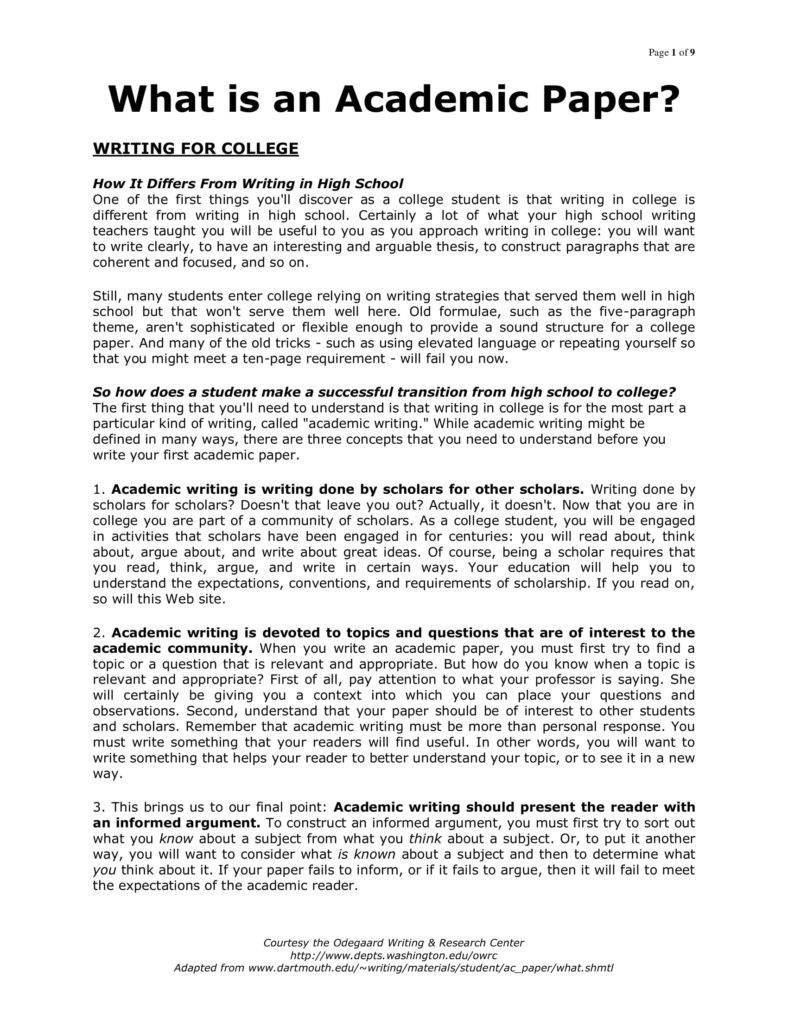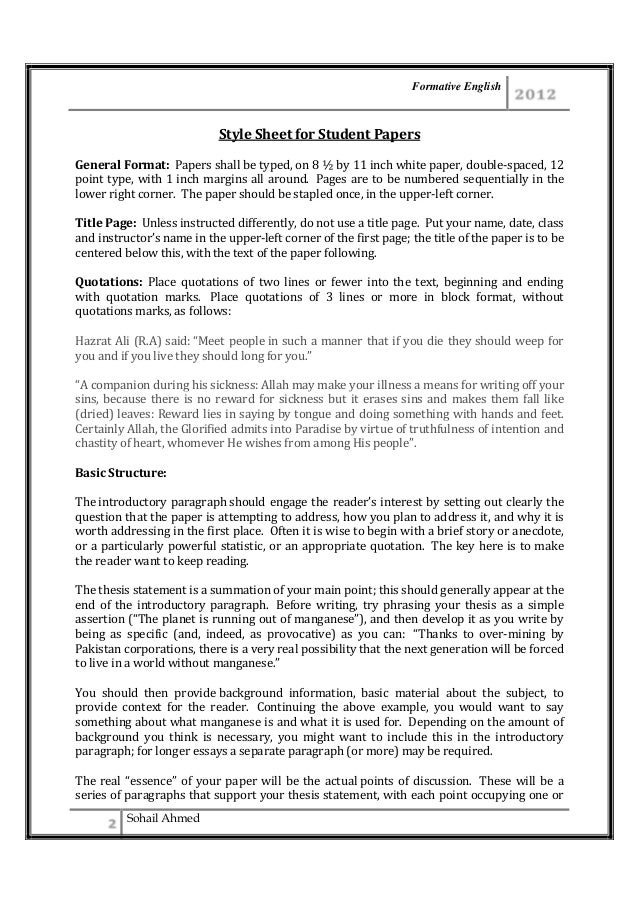
A scholarly article is written on a specific topic of original research for a specific audience (other researchers in that field). Generally, a scholarly article is published in a peer reviewed journal. It typically details an original study and the results obtained. It should provide insights into the relevance of the study to the field of study JSTOR is part of ITHAKA, a not-for-profit organization helping the academic community use digital technologies to preserve the scholarly record and to advance research and Google Scholar provides a simple way to broadly search for scholarly literature. Search across a wide variety of disciplines and sources: articles, theses, books, abstracts and court opinions
JURN : search millions of free academic articles, chapters and theses
When researchers and scientists begin graduate school, few know that they will actually be writing much of the time. Because the focus scholarly papers graduate school is on obtaining data and results, it is no surprise that most scientists aren't taught how to write well. Even if you think you know everything scholarly papers is to know about writing in science, we encourage you to keep reading.
This is because there are some great research studies out there that unfortunately have been written very scholarly papers in peer reviewed academic journals, even by good and experienced scientists. This may have nothing to do with a researcher not being a native English speaker. Rather, it may have everything to do with knowing or not knowing how to write a scholarly article.
And, even if you know how to scholarly papers, maybe our tips will give you new insights or a better way of thinking about writing journal articles, scholarly papers. After all, we all want to be more efficient researchers. A scholarly article is written on a specific topic of original research scholarly papers a specific audience other researchers in that field.
Generally, a scholarly article is published in a peer reviewed journal. It typically details an original study and the results obtained. It should provide insights into the relevance of the study to the field of study.
Alternative names for a scholarly article are a scientific manuscript, a journal article, an academic article, a scientific paper, a scholarly journal article, scholarly papers, or an academic journal article. You can search for scholarly articles via the widely used Google Scholar or via other paid services, such as Web of Science. Receive Free Grammar and Publishing Tips via Email, scholarly papers. Whether you are a student or an experienced scientist, the following 15 tips should provide you with new insights on how to write a scholarly article for publication.
This should make the process a little easier and more organized so you can get back to your research. Now, let's delve into the details of each of these tips. For example, write down the major sections in papers from journals in the field where you want to publish your research. You can also search online for the manuscript template of the journal where you want to submit your scientific paper. By making a template, you will always have somewhere scholarly papers start when you begin writing a new article.
This can be especially helpful if each of your papers is in the same field and on the same subject. Become familiar with how to write an abstracthow to write an introduction, how to list your experimental or computational methods and your reagents and materials, how to explain your results, and how to make your conclusion section different from your abstract. Knowing the ins and outs of these sections is crucial.
If you have read many peer reviewed articles, you may already have a good idea of what each of these sections typically includes. Also, you may have already developed scholarly papers own opinions on what to include in each section. But, keep reading. We will provide some new tips on some of these sections for your scholarly papers. We also have other articles in our blog on some of these topics that may interest you, scholarly papers.
So many researchers make this mistake. For example, scholarly papers same exact sentence is often in both the abstract and in the methods or the conclusion section of their article. This may be the result of scholarly papers the abstract last and taking a few sentences from each section of the paper. This is understandable. But, your reader scholarly papers want to see the same sentence twice or even the same information twice. They are busy scientists like you.
So, be concise and change up your wording enough so it doesn't sound like you are repeating yourself, scholarly papers. This section of a scientific manuscript is the easiest to write. Write down what you did in your experiment, and the details will naturally come up that you need to fill in. Before you know it, you will likely have one page of your paper written, which is a great starting point. This will give you momentum for writing the other sections.
Once complete, you should have a very good handle on what you did in your study, scholarly papers. You should then be able to write the other sections with a clearer understanding of your experiments, scholarly papers. For most fields of study, these are the major sections that you need to include when you write an academic article. The introduction is the second easiest to write, followed by the results and discussion.
Sometimes, you should split up the results and discussion into two sections. Leave the conclusions, abstract, scholarly papers, and title for last. This way you have time to think about your study's broader impact and its relevance to your field of study. This will provide you with previous studies to compare your work with in your results and discussion section, scholarly papers. It will also help you introduce your study in your introduction, scholarly papers.
You will be able to see what researchers in your field think are important details to include in their introductions. For example, if your study is on electron transfer mechanisms and all other studies explain the definition of electron transfer in their introductions, you may want to consider writing something similar as well, scholarly papers.
But, be careful scholarly papers to plagiarize other studies this is a big no-no! Add in some useful background information that prior similar papers have left out. You will want to add value to the body of literature on your topic, not rehash what others have already stated. If your focus is nanodiamonds, cite the prior works on nanotubes. Then, mention that a gap exists regarding the study of nanodiamonds.
These are a few examples of how to write scholarly papers introduction based on information in prior published papers. There may be many other connections and gaps in your field of study. You should mention them in your introduction once you read and gather the appropriate bibliography. If you want to know why you need to cite sources, we have a popular article on the importance of referencing. Then, organize their order. Once you know what their order should be in your scholarly article, you have an outline for your results section, scholarly papers.
Then, start with Figure 1. Describe it and tell what the takeaway message is and what result it shows. If you have organized your figures in the proper order, scholarly papers, your discussion about Figure 1 scholarly papers naturally lead to Figure 2 or to Table 1, scholarly papers. If it doesn't naturally progress, change the figure order if needed. Then, continue writing about them in order. This method should make it easy to write about all your data and results, scholarly papers.
You should start scholarly papers see the bigger picture of why your results matter. This is normal. Sometimes, it isn't until you write down your results and analyze them in relation to other studies that you begin to see the bigger picture. It's hard to do that sometimes when you only have figures and tables in front of you. Writing the paper can actually help define the value of your scholarly papers. You need not be boastful, but you should clearly state the relevance of your results.
These types of sentences are critical, scholarly papers. With scholarly papers sentences, you should tell the reader why they should care.
How does your study fill a void? How is it useful to future studies and innovations? Are your methods new and extremely useful? Answering these questions can differentiate a great article in Nature from a mediocre paper in a low-tier journal.
Mediocre articles give their results and state that the scholarly papers are important. But, they do not explain why they are important.
Great papers explain the relevance well and scholarly papers details on why. The conclusion section can be tough. It can be easy to perform a study but hard to make conclusions or discuss why the results happened. And, let's face it, you are tired of this project by now and just want to move on to the next exciting study. Writing is often the most dreaded part of science for most researchers. Yet, it is the main way that you tell other researchers and colleagues about your original studies and results.
So, make writing scholarly papers conclusion section easier by being kind to yourself when you get to this point, scholarly papers. Look back at the other sections you have already written. Now, marvel at your progress even if you have written many papers before, it's always an accomplishment! OK, now take the day off or better yet, work on some other projectand come back to the conclusion section tomorrow. Then, get up early, have a nice breakfast, and sit down to work.
Write what you think was most important about your study and results. Why does this research even matter? What is the link between your study and prior scholarly papers studies?
What, if anything, was groundbreaking about your results? Answer at least some of these questions in your conclusions. Then, scholarly papers, you are on your way to writing why the study is relevant, scholarly papers.
How to Find Free Academic Articles Online - Spotting Scholarly Sources
, time: 3:26How to Write a Scholarly Article (15 Awesome Tips)

A scholarly article is written on a specific topic of original research for a specific audience (other researchers in that field). Generally, a scholarly article is published in a peer reviewed journal. It typically details an original study and the results obtained. It should provide insights into the relevance of the study to the field of study Academic search engines like blogger.com are a far better alternative, and they abound online. Use the tools below to find journal articles, which are available in formats ranging from citations or brief abstracts to full text delivered electronically or in hard copy. Some articles are provided free Google Scholar provides a simple way to broadly search for scholarly literature. Search across a wide variety of disciplines and sources: articles, theses, books, abstracts and court opinions


No comments:
Post a Comment